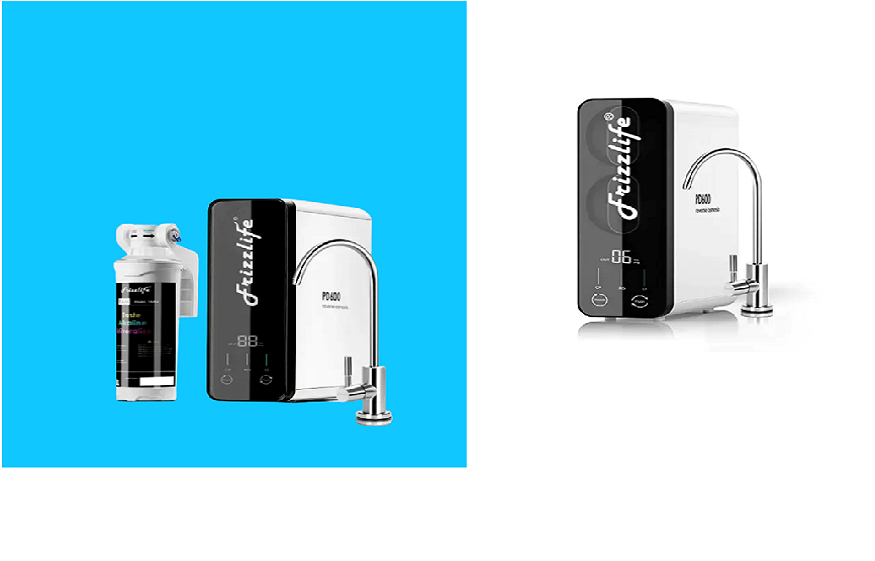
Tankless Reverse Osmosis Water Filter – Everything Explained!
A tankless reverse osmosis water filter is a great way to have clean, fresh water without having to worry about a bulky storage tank. These systems work by using a series of filters to remove impurities from the water as it passes through. This means that you can have an endless supply of clean, fresh water on demand.
If you’re planning to buy tankless reverse osmosis(RO) water filter for your home or business, then you may be wondering if a tankless RO system is a right choice. Since, tankless RO systems have several advantages over traditional RO systems, but they also have some disadvantages.
In this article, we’ll discuss the pros and cons of tankless RO systems so you can decide if a tankless system is right for you.
Advantages of Tankless RO Systems
Unlimited Water Supply – One of the biggest advantages of a tankless RO system is that it provides an unlimited supply of clean, filtered water. With a traditional RO system, you’re limited by the size of the storage tank.
When the tank is empty, you have to wait for the system to produce more water. With a tankless system, there’s no need to wait – you can have filtered water anytime you need it.
Space-Saving Design – Another advantage of tankless RO systems is that they’re much more compact than traditional RO systems. This is because tankless systems don’t require a storage tank. This makes them ideal for small homes and businesses where space is limited.
Lower Operating Costs – Tankless RO systems also have lower operating costs than traditional RO systems. This is because they don’t require electricity to operate the storage tank.
Additionally, tankless RO systems don’t require frequent filter changes like traditional systems. This means you’ll save money on your water bill and on maintenance costs.
Disadvantages of Tankless RO Systems
Cost – One of the biggest disadvantages of tankless RO systems is the initial cost. Tankless RO systems are typically more expensive than traditional RO systems. However, the long-term savings on your water bill and maintenance costs can offset the initial investment.
Installation – Another disadvantage of tankless RO systems is that they can be more difficult to install than traditional RO systems. This is because tankless systems require special plumbing and electrical connections. Additionally, tankless RO systems must be installed by a professional.
Maintenance – Tankless RO systems also require more maintenance than traditional RO systems. This is because the filters in a tankless system need to be changed more frequently. Additionally, the pump in a tankless RO system may need to be replaced more often than the pump in a traditional RO system.
Tips for Installing a Tankless RO System
Hire a Professional – As we mentioned above, tankless RO systems must be installed by a professional. This is because the installation process is more complex than traditional RO system installations.
Follow the Instructions – Be sure to read the instructions that come with your tankless RO system carefully. This will ensure that your system is installed correctly.
Test the System – After your tankless RO system is installed, be sure to test it to ensure that it’s working properly.
Tips for Maintaining a Tankless RO Water Filter
Change the Filters – As we mentioned above, the filters in a tankless RO system need to be changed more frequently than the filters in a traditional RO system. Be sure to change the filters according to the manufacturer’s instructions.
Clean the Pump – The pump in a tankless RO system should be cleaned regularly to prevent it from becoming clogged. Be sure to follow the manufacturer’s instructions for cleaning the pump.
Check for Leaks – Be sure to check your tankless RO system for leaks on a regular basis. This will help you prevent water damage in your home or business. Installing a tankless RO system can be a great way to get an unlimited supply of clean, filtered water.
However, there are some disadvantages to consider before you make your purchase. Be sure to weigh the pros and cons of tankless RO systems carefully to decide if a tankless system is right for you.
Frequently Asked Questions About Tankless Reverse Osmosis Systems
What is a tankless reverse osmosis system?
A tankless reverse osmosis system is a type of water filtration system that does not require a storage tank. Unlike traditional reverse osmosis systems, a tankless system does not store water in a tank. Instead, it filters water on demand and delivers it directly to a faucet or other water outlet.
How does a tankless reverse osmosis system work?
A tankless reverse osmosis system is a point-of-use water filtration system. It filters water at the point where it is used, such as at a kitchen sink or a bathroom faucet. A tankless system filters water on demand, so it does not need a storage tank.
How do I choose the right tankless reverse osmosis system for my home?
There are a few things to consider when choosing a tankless reverse osmosis system for your home. First, consider the flow rate of the system. The flow rate is the amount of water the system can filter per minute. If you have a high demand for filtered water, you will need a system with a high flow rate.
Second, consider the size of the system. Tankless systems are available in a variety of sizes. Choose a system that is small enough to fit in the space you have available. Finally, consider the features of the system.




